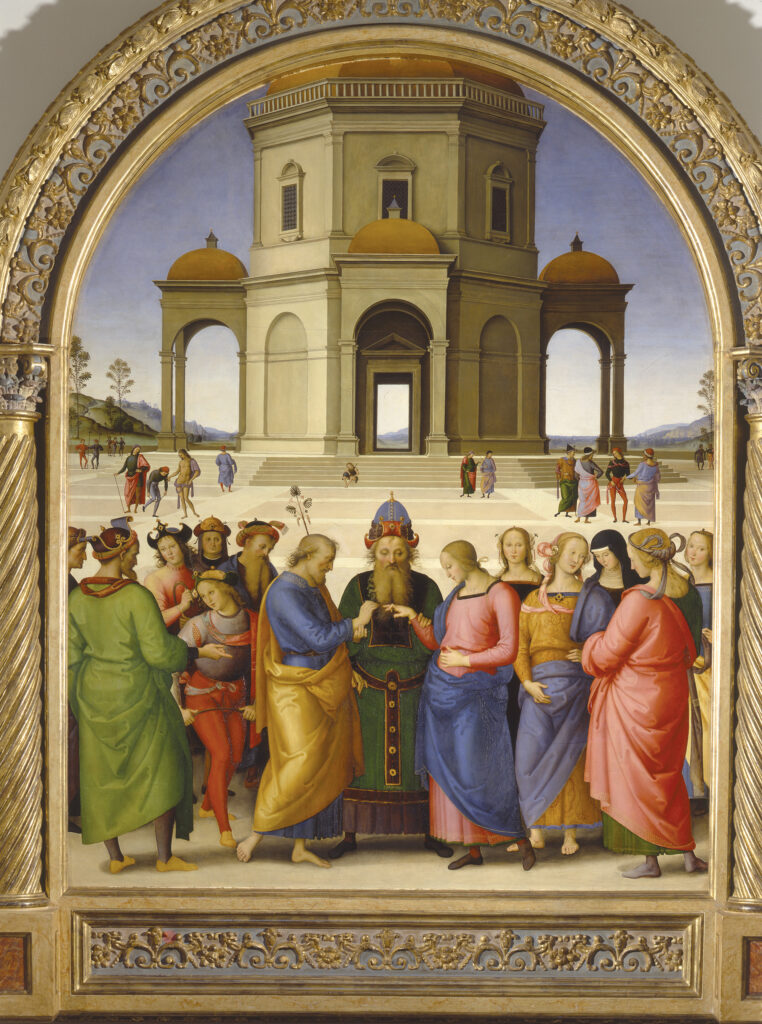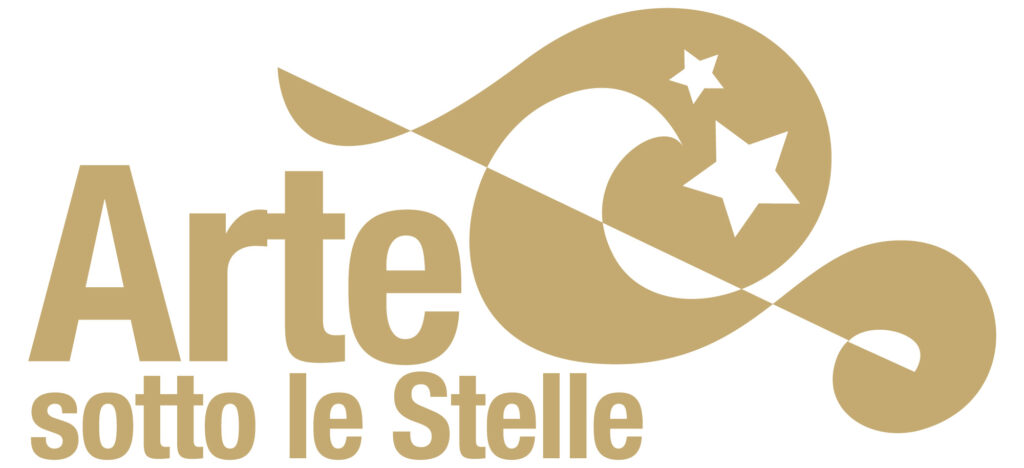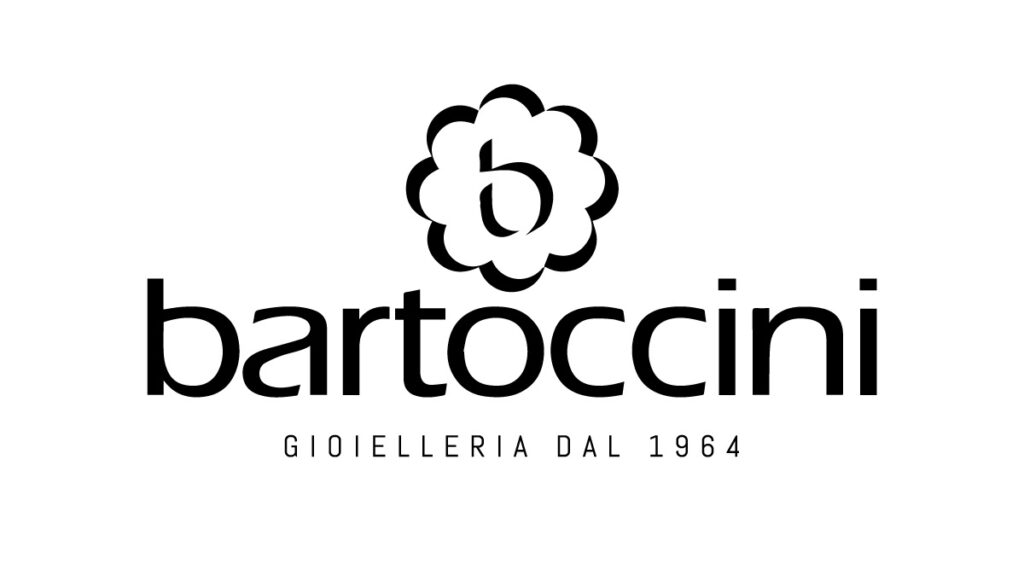The Marriage of the Virgin – Musée des Beaux-Arts – Caen
The scene takes place outdoors, in a large square, whose perspective view is emphasized by white squares on the darker pavement.
In the foreground the episode that gives name to the work is taking place, that is, the marriage between Saint Joseph, on the left, followed by the male wedding procession, and Mary, with her young escorts.
The two newly-weds are portrayed while exchanging rings under the gaze of the priest, who is exactly in the center of the composition. . Mary extends her right hand to her future husband, who puts the ring on her finger, while with her left hand she gently caresses her belly, foreshadowing the future pregnancy that will give life to Jesus.
The figures are elegant and composed in their movements; the garments with bright colors are heavily draped on the bodies.
In the background, in addition to some group of unidentifiable figures scattered in the square, there’s a monumental building of complex and sophisticated architectural structure: it is probably a temple, that following the dictates of the treaties of Leon Battista Alberti is raised from the square by a staircase.
Beyond the temple it is possible to see a hilly landscape, which fades towards the horizon returning the effect of an infinite space, typical of the technique of aerial perspective.
The work, realized in 1501/1504, was originally painted to adorn the Chapel of the Holy Ring, where the wedding ring of the Virgin is kept, in the Cathedral of Perugia; in 1797, during the Napoleonic dispossession, it was transported to France and never returned to Italy: a nineteenth-century work executed by J. B. Wicar is in its place in Perugia.
The painting is preserved at the Musée des Beaux Arts in Caen.











